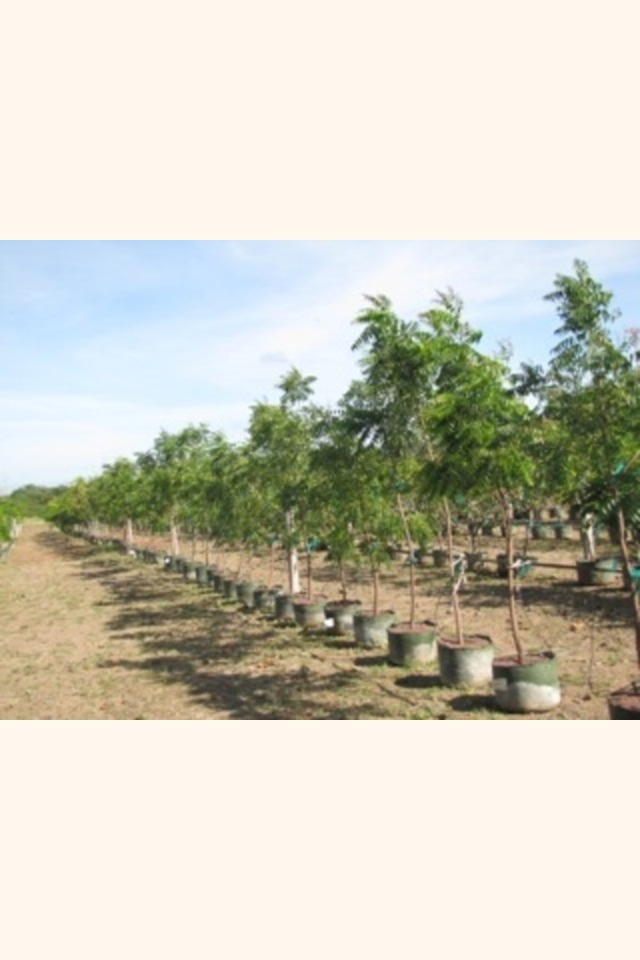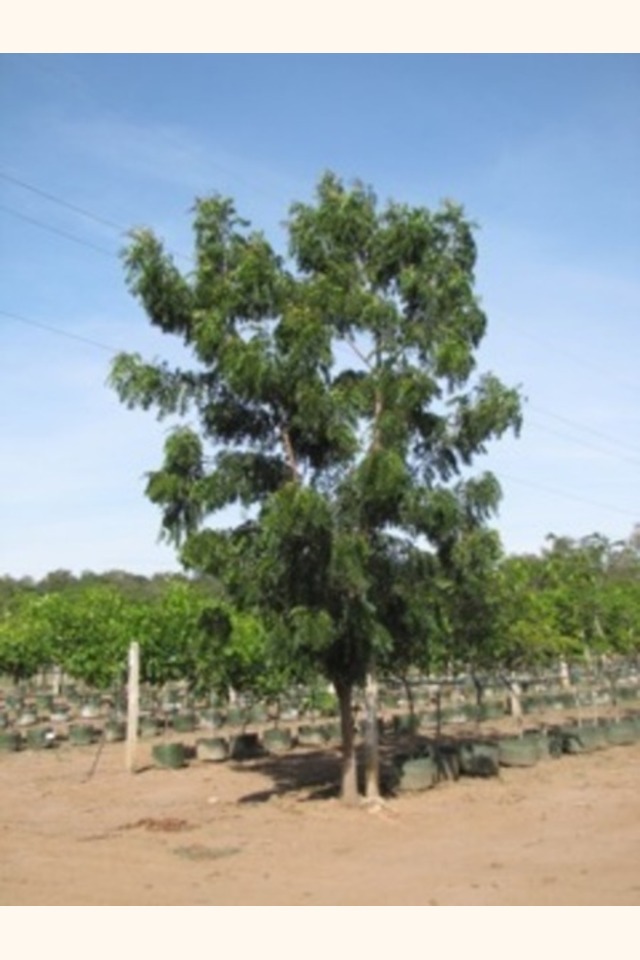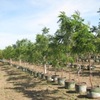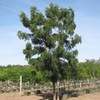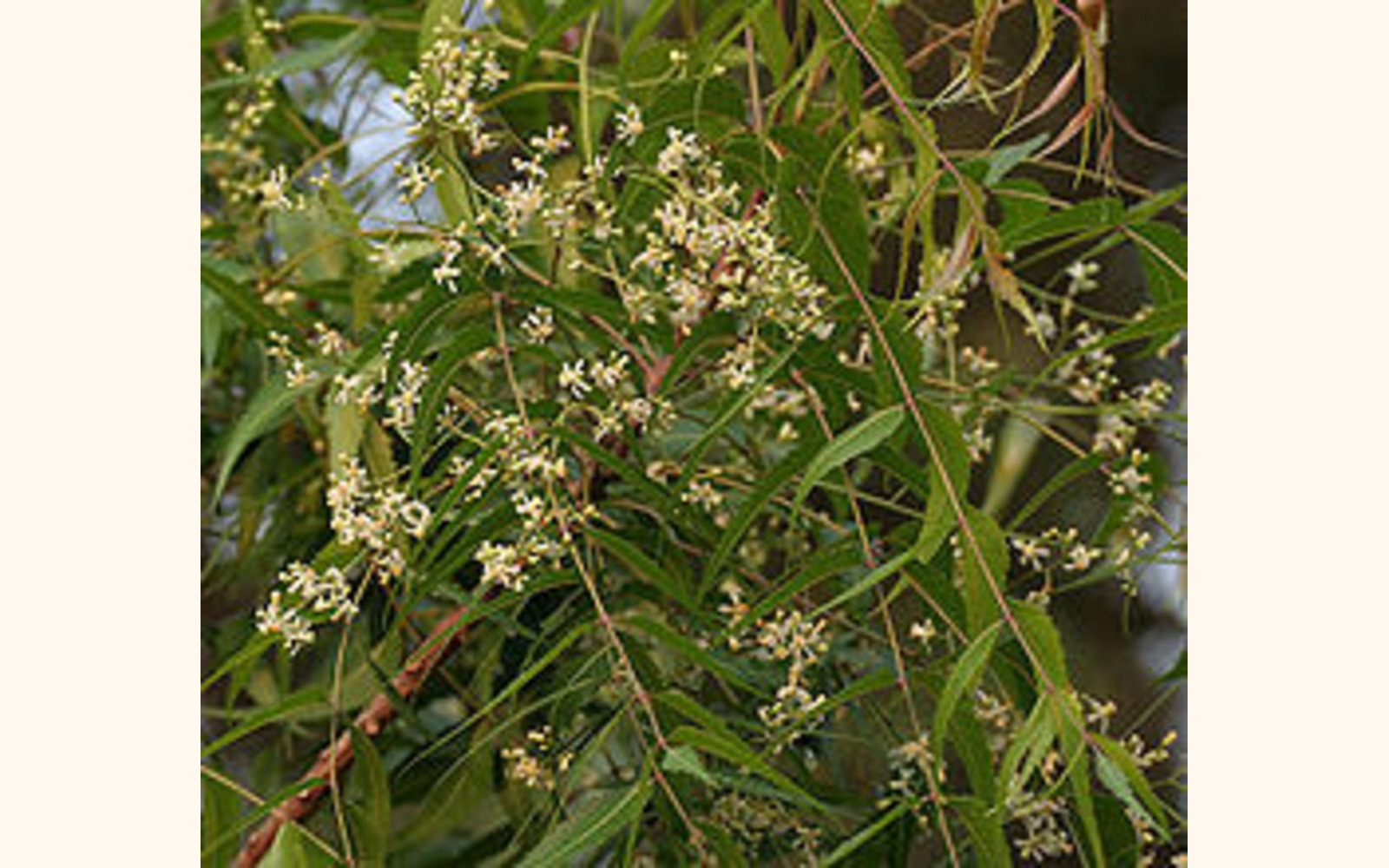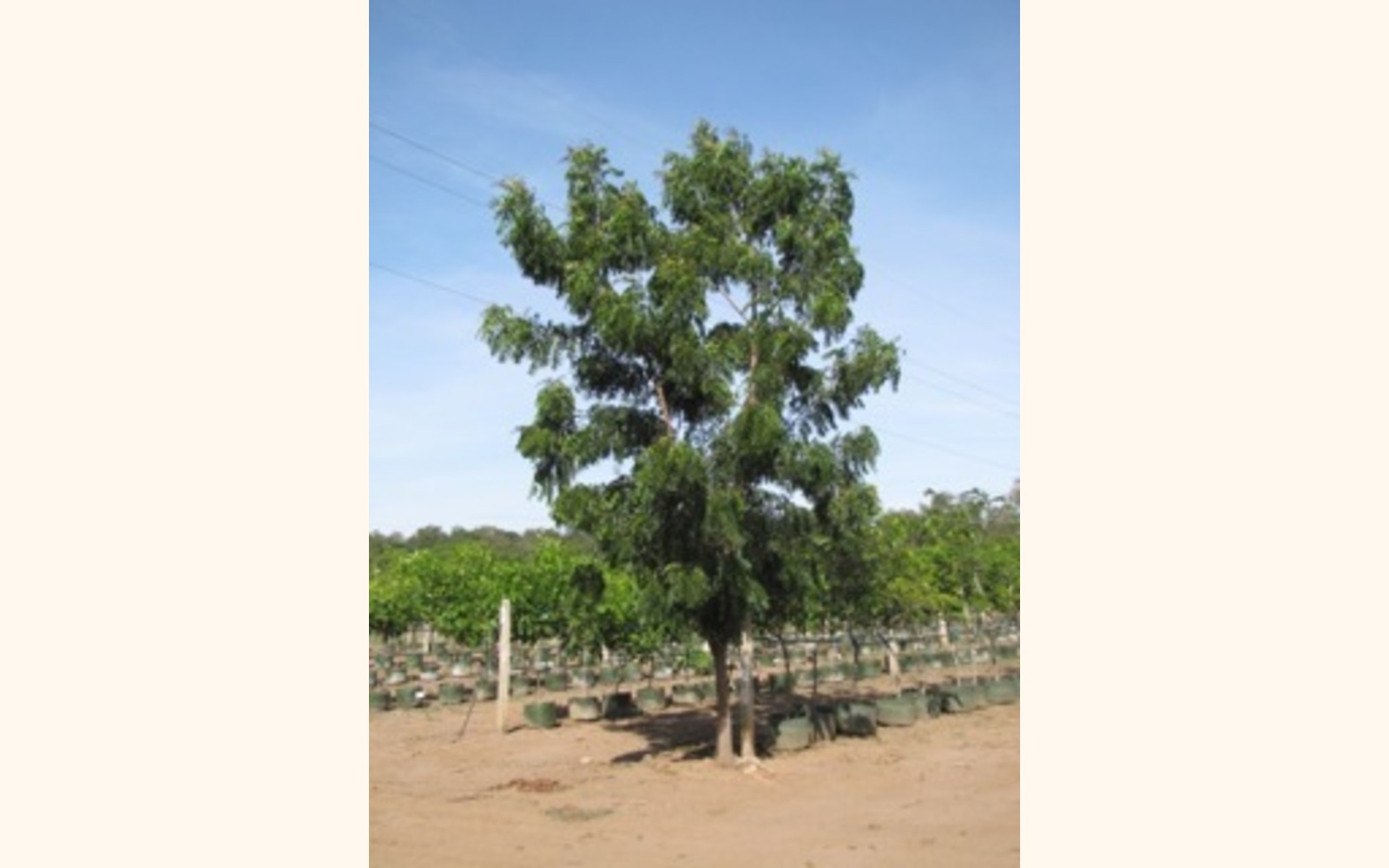
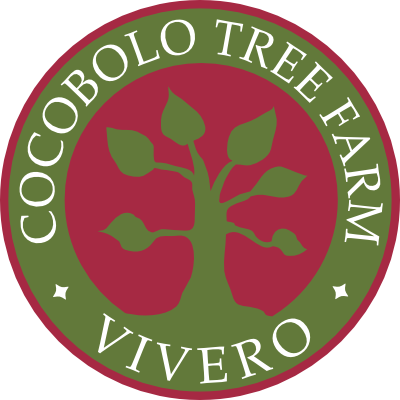
Plants > Ornamental & Shade Trees > Neem
Neem , Neem, Paraiso
Neem is one of two species in the genus Azadirachta, and is native to India, Pakistan, and Bangladesh growing intropical and semi-tropical regions. It is a fast-growing tree that can reach a height of 15–20 metres (49–66 ft), rarely to 35–40 metres (115–130 ft). It is evergreen, but in severe drought it may shed most or nearly all of its leaves. The branches are wide and spreading. The fairly dense crown is roundish and may reach a diameter of 15–20 metres (49–66 ft) in old, free-standing specimens. Its fruits and seeds are the source of neem oil.
Plant Characteristics
- Height: 35 M
Leaves
The opposite, p
Fruit
The fruit
Flowers
The (white and fragrant)
Additional Information
Benefits | Desirability
Neem is used for many things .
Pest and disease control
Neem is a key ingredient in non-pesticidal management (NPM), providing a natural alternative to synthetic pesticides. Neem seeds are ground into a powder that is soaked overnight in water and sprayed onto the crop. To be effective, it is necessary to apply repeatedly, at least every ten days. Neem does not directly kill insects on the crop. It acts as an anti-feedant, repellent, and egg-laying deterrent, protecting the crop from damage. The insects starve and die within a few days. Neem also suppresses the hatching of pest insects from their eggs. Neem cake is often sold as a fertilizer.[9]
Other Uses:
- Cosmetics: Neem oil is used for preparing cosmetics such as soap, neem shampoo, balms and creams as well as toothpaste.
- Toothbrush: Traditionally, slender neem branches (called datun has been chewed as atoothbrushand then split as a tongue cleaner[10] in India, Africa, and the Middle East for centuries. Many of India's 80 % rural population still start their day with the chewing stick, while in urban areas neem toothpaste is preferred. Neem twigs are still collected and sold in markets for this use, and in rural India one often sees youngsters in the streets chewing on neem twigs. It has been found to be equally effective as a toothbrush in reducing plaque andgingival inflammation.[11][12]
- Tree: Besides its use in traditional Indian medicine, the neem tree is of great importance for itsanti-desertification properties and possibly as a good carbon dioxide sink.[citation needed]
- Practitioners of traditional Indian medicine recommend that patients with chicken pox sleep on neem leaves.[citation needed]
- Neem gum is used as a bulking agent and for the preparation of special purpose food.
- Neem blossoms are used in Andhra Pradesh, Tamil Nadu and Karnataka to prepare Ugadi pachhadi. "Bevina hoovina gojju" (a type of curry prepared with neem blossoms) is common in Karnataka throughout the year. Dried blossoms are used when fresh blossoms are not available. In Tamil Nadu, a rasam (veppam poo rasam) made with neem blossoms is a culinary specialty.
- A mixture of neem flowers and bella (jaggery or unrefined brown sugar) is prepared and offered to friends and relatives, symbolic of sweet and bitter events in the upcoming new year.
- Cosmetics : Neem is perceived in India as a beauty aid. Powdered leaves are a major component of at least one widely used facial cream. Purified neem oil is also used in nail polish and other cosmetics.
- Bird repellent: Neem leaf boiled water can be used as a very cost effective bird repellent measure, especially for sparrow.
- Lubricant : Neem oil is non drying and it resists degradation better than most vegetable oils. In rural India, it is commonly used to grease cart wheels.
- Fertilizer : Neem has demonstrated considerable potential as a fertilizer. Neem cake is widely used to fertilize cash crops particularly sugarcane and vegetables. Ploughed into the soil, it protects plant roots from nematodes and white ants, probably due to its contents of the residual limonoids.[citation needed] In Karnataka, people grow the tree mainly for its green leaves and twigs, which they puddle into flooded rice fields before the rice seedlings are transplanted.
- Resin : An exudate can be tapped from the trunk by wounding the bark. This high protein material is not a substitute for polysaccharide gum, such as gum arabic. It may however, have a potential as a food additive, and it is widely used in South Asia as "Neem glue".
- Bark : Neem bark contains 14% tannin, an amount similar to that in conventional tannin yielding trees (such as Acacia decurrens). Moreover, it yields a strong, coarse fibre commonly woven into ropes in the villages of India.
- Honey : In parts of Asia neem honey commands premium prices, and people promote apiculture by planting neem trees.
- Soap : India's supply of neem oil is now used mostly by soap manufacturers. Although much of it goes to small scale speciality soaps, large scale producers also use it, mainly because it is cheap. Generally, the crude oil is used to produce coarse laundry soaps.
References
http://en.wikipedia.org/wiki/Azadirachta










